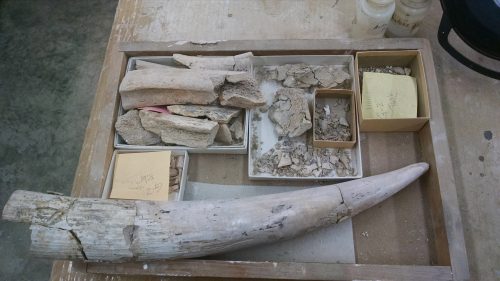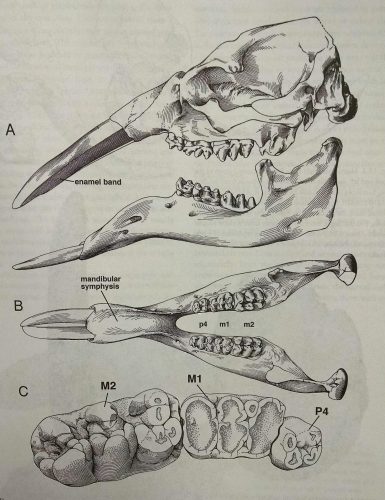
This past week I was assign to reconstruct a gomphothere’s tusk and rib bone. I am actually the fourth person that has worked on this project, and most likely the last before it goes in the museum’s collections.
For some of you that are still wondering what is a gomphothere, this is a relative of the mastodon and mammoth. This extinct proboscidean lived during the Miocene and Pliocene, which is about 12 – 1.6 million years ago. These mammals were globally distributed, its remains have been found in North America, East Africa, Europe, Japan and China.

The amazing feature about this extinct animal is that it had four tusks, two upper and two lower. Their upper tusk are curved downward and outward and their lower tusks had a spatulated- shape.
The shoulder height of this mammal was over 2.5 meters (8-9 feet). Just to compare, an African Elephant can reach 3.9 meters (8.2 to 13 feet) and a mammoth had a height of 4 meters (13 feet).
It is speculated that gomphotheres lived in savanna-like environments.

I have been reconstructing the tusk, gluing the fragments of enamel back into the tusk as well as the fragments of the rib bone. Unfortunately not all of the remains of the gomphothere could be salvage from the field, and after a week on working with it I think I might have reach a dead end. Nevertheless, this is an important discovery being one of the few remains of this mammal that have been located in Florida.